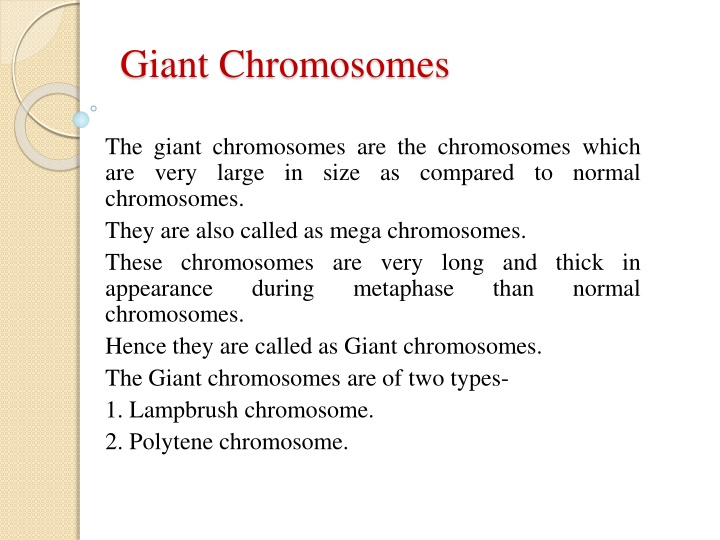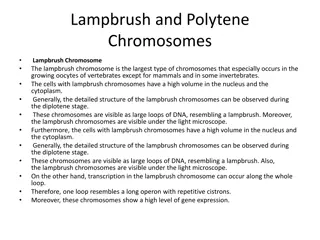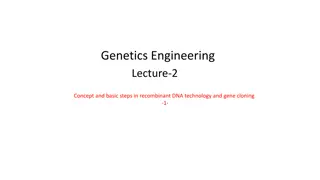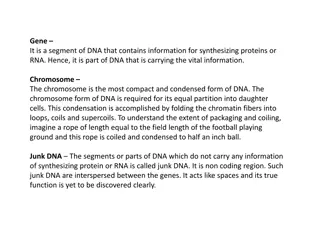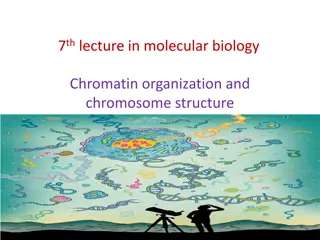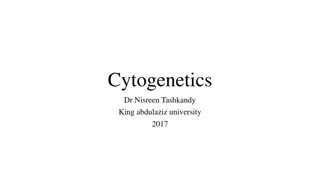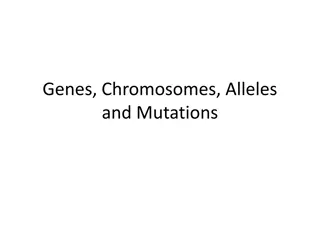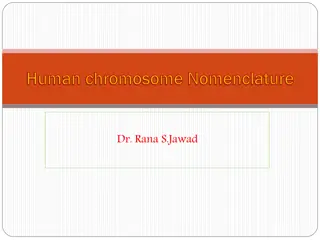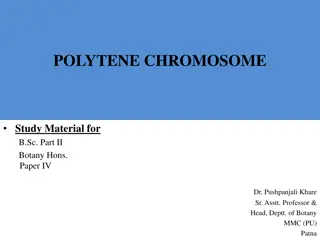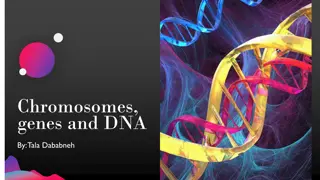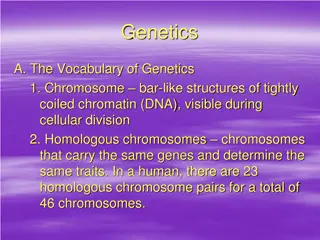Giant Chromosomes: Lampbrush and Polytene Chromosomes
Giant chromosomes, such as lampbrush and polytene chromosomes, are significantly larger in size compared to normal chromosomes. Lampbrush chromosomes are found in oocytes of various vertebrates, while polytene chromosomes are common in dipteran flies like Drosophila. These specialized chromosomes play crucial roles in processes like gene mapping and eukaryotic gene amplification.
Download Presentation

Please find below an Image/Link to download the presentation.
The content on the website is provided AS IS for your information and personal use only. It may not be sold, licensed, or shared on other websites without obtaining consent from the author.If you encounter any issues during the download, it is possible that the publisher has removed the file from their server.
You are allowed to download the files provided on this website for personal or commercial use, subject to the condition that they are used lawfully. All files are the property of their respective owners.
The content on the website is provided AS IS for your information and personal use only. It may not be sold, licensed, or shared on other websites without obtaining consent from the author.
E N D
Presentation Transcript
Giant Chromosomes The giant chromosomes are the chromosomes which are very large in size as compared to normal chromosomes. They are also called as mega chromosomes. These chromosomes are very long and thick in appearance during metaphase chromosomes. Hence they are called as Giant chromosomes. The Giant chromosomes are of two types- 1. Lampbrush chromosome. 2. Polytene chromosome. than normal
1. Lampbrush chromosome Lampbrush by Walther Flemming in 1882 in the oocytes of Salamander and described by Ruckert in shark oocytes in 1892. This is a giant chromosome which is found in the oocytes or immature egg of most of the vertebrates such as fishes, amphibians, reptiles and birds also in some insects. They are generally found in oocytes as the DNA content is very high in these cells. They are formed in response to the active synthesis of mRNA molecules for egg cells. These chromosomes are not found in mammals. chromosomes were first observed
The chromosomes is that it include fine lateral loops that originate from the chromomeres in the diplotene stage of prophase first of meiosis. These chromosomes are found in both animal species, vertebrates and invertebrates. So, they can be seen only in the prophase first's diplotene stage of meiosis. They are generally smaller in size in case of invertebrates than vertebrates. Its lateral loops give it its characteristic lamp brush like appearance. characteristic features of Lampbrush
The longitudinal axis of chromosome from which loops are arises that are made of a single DNA molecule each. Numerous bead-like structures called chromomeres are arranged in a linear fashion along this axis. Two symmetrical lateral loops in opposite direction emerge from each chromomere that may expand or contract in response to conditions. Biological significance The loops present in case of lampbrush chromosomes are used in chromosome mapping, particularly those loops that appear at a constant location in the chromosome. It provides evidence for eukaryotic gene amplification that is needed in the growth phase of oocytes. This can be used for the processes. different environmental analysis in hybridization
Polytene Chromosome Polytene chromosomes are large chromosomes which have thousands of DNA strands. Polytene chromosomes by E.G.Balbiani in 1881. Polytene chromosomes are found in dipteran flies, for eg. Drosophila. In insects, they are commonly found in the salivary glands when the cells are not dividing. Polytene chromosomes are produced when repeated rounds of DNA replication without cell division forms a giant chromosome. Polytene chromosomes, at interphase, are seen to have distinct thick and thin banding patterns which are called as dark and light bands respectively. were first reported
Structure of Polytene Chromosome In insects, polytene chromosomes are commonly found in the salivary glands. As their presence in salivary gland, they are also called as "salivary gland chromosomes". The polytene chromosome contains two types of bands namely- Dark bands and Interbands (light bands). The dark bands are darkly stained and the inter bands are lightly stained with nuclear stains. The dark bands contain more DNA and less RNA and interbands contain more RNA and less DNA. The bands of on chromosomes become enlarged at certain times to form swellings called puffs.
The formation of puffs in case of polytene chomosomes is called puffing. In the regions of puffs, the chromonemata get uncoil and open out to form many loops. The puffing is caused by the uncoiling of individual chromomeres in a band. The puffs indicate the site of active genes where mRNA synthesis takes place. The chromonemata of puffs give out a series of many loops laterally. The chromonematal loops appear as rings, they are called Balbiani rings
Biological significance The banding patterns in polytene chromosomes were originally used to help map chromosomes, identify small chromosome in taxonomic identification. They are now used to study the function of genes in transcription. The interbands in these chromosomes are involved in the interaction with the proteins, nucleosome remodeling, and origin recognition complexes. mutations, and active chromatin
